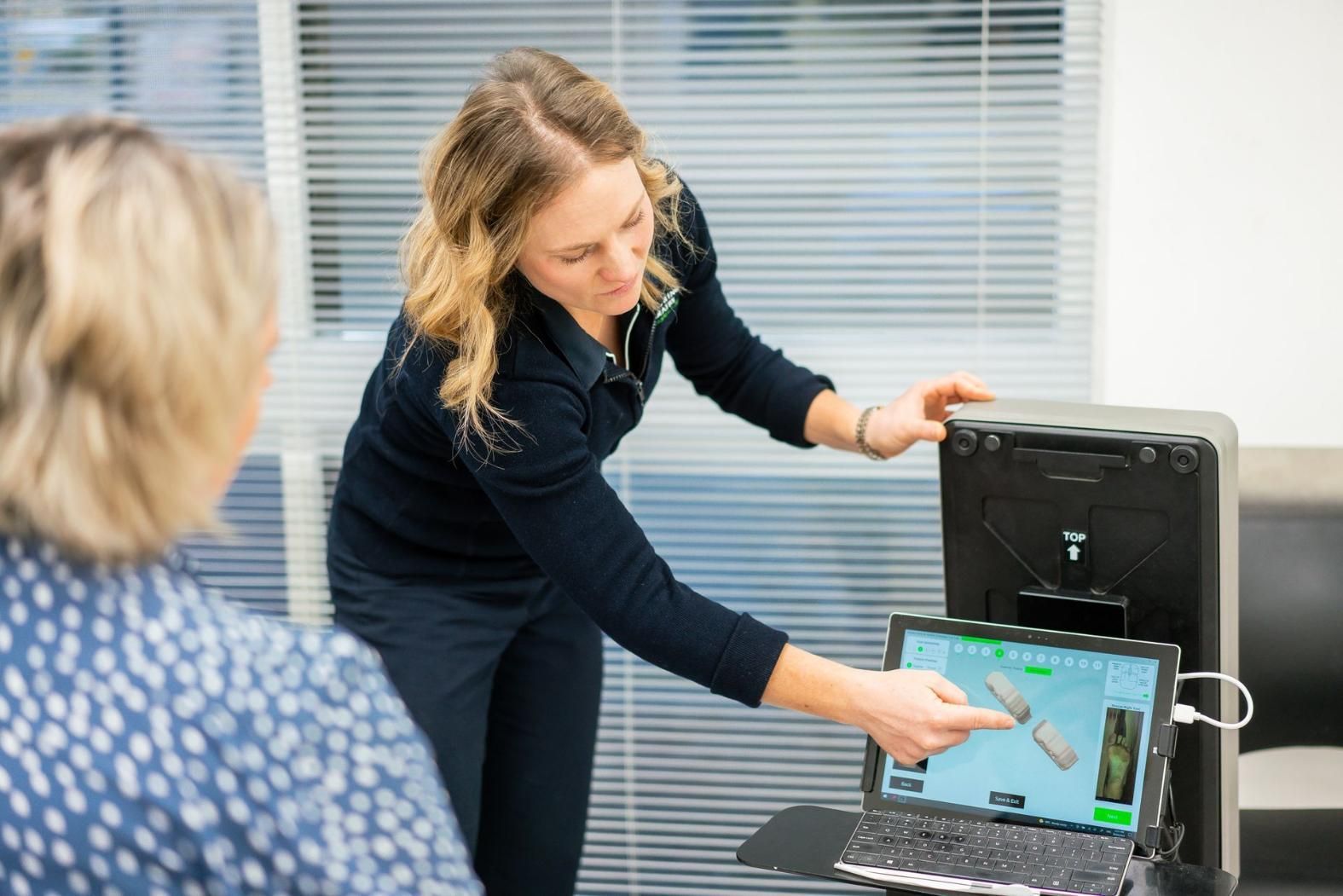Foot Assessment in Alice Springs
- Professional Team: Dedicated to patient care.
- Accessibility: Off-street parking for patient convenience.
- Health Rebates: HICAPS available for eligible claims.
Request a Call Back
Contact Us
Thank you for contacting Alice Springs Podiatry.
We will get back to you as soon as possible.
Please try again later.
Alice Springs Foot Assessment
If you’ve ever wondered why you’re experiencing foot pain, movement issues, or recurring injuries, the answer often starts with a proper assessment. At Alice Springs Podiatry, we consider your body’s entire posture when we talk about your feet. When your feet are out of alignment it forces other joints in your body out of alignment. A change to the normal walking pattern can lead to stress and strain in other areas of the body.
Using advanced assessment tools like video gait analysis, pressure plate testing, diagnostic ultrasound, and blood flow ultrasound, we can assess your presenting concerns and ensure treatment is tailored to your needs with precision and care. These services are especially valuable for people experiencing unexplained pain, re-current injuries and/or ongoing discomfort.
- Technology that sees what eyes can’t
- Early detection to avoid long-term complications
- Tailored insights to guide your next steps
Whether you're an athlete, a senior, or someone living with diabetes, a high-quality assessment is your first step toward understanding what’s really going on and what to do next. For professional diagnostic services in Alice Springs, call 08 8953 8822 to book your appointment today.
Why Accurate Foot Assessments Matter
Foot assessments offer more than just a diagnosis—they form the foundation for long-term foot health. At Alice Springs Podiatry, assessments cover neurological testing, vascular screening, biomechanical reviews, and footwear evaluations. These services are helpful for a wide range of people, including those experiencing sports injuries, pain with movement, or reduced circulation.
Tools like gait analysis and pressure mapping can detect subtle abnormalities that may contribute to pain in the knees, hips, or back. For individuals with diabetes, regular assessments play a key role in monitoring changes that without proper care could lead to serious complications.
- Video gait analysis to spot gait issues
- Pressure plate testing to assess areas of over-load
- Diagnostic ultrasound for bone and soft tissue injuries
- Detailed movement tracking to spot gait issues
- Doppler ultrasound for blood flow assessment
From early signs of joint stress to circulation changes, podiatric assessments can highlight what's working and what needs attention. To find out more or request an appointment, contact us today.
What happens during a gait analysis?
Gait analysis involves observing how you walk and/or run to identify any deviations from normal movement patterns. Analysis can highlight joint restrictions, muscle imbalances or structural abnormalities such as a limb length difference. Gait changes are commonly associated with conditions such as plantar fasciitis, bunions, stress fractures, and arthritis.
What is pressure plate analysis used for?
Pressure plate analysis tracks how weight is distributed across your feet while walking or standing. It’s helpful for people with heel pain, diabetic foot risks, or posture concerns. The system records pressure changes in real-time, making it easier to identify areas receiving too much or too little load. The results can inform changes to orthotics, posture habits, or lower-limb conditioning.
Why is Doppler ultrasound used in podiatry?
Doppler ultrasound is a non-invasive way to check blood flow in the feet and lower legs. It’s especially important for people with diabetes or vascular conditions, as poor circulation can increase the risk of ulcers or delayed healing. The test uses sound waves to detect blood movement and assess whether arteries are clear or narrowed. Results can guide ongoing care and reduce potential complications.
How often should a diabetes foot assessment be done?
For people living with diabetes, an annual foot assessment is recommended, though more frequent checks may be advised if high risk factors are present. These evaluations monitor skin condition, circulation, nerve function, and pressure areas. Early detection of nerve damage or poor blood flow can help reduce the likelihood of serious issues like infections or ulcers.





